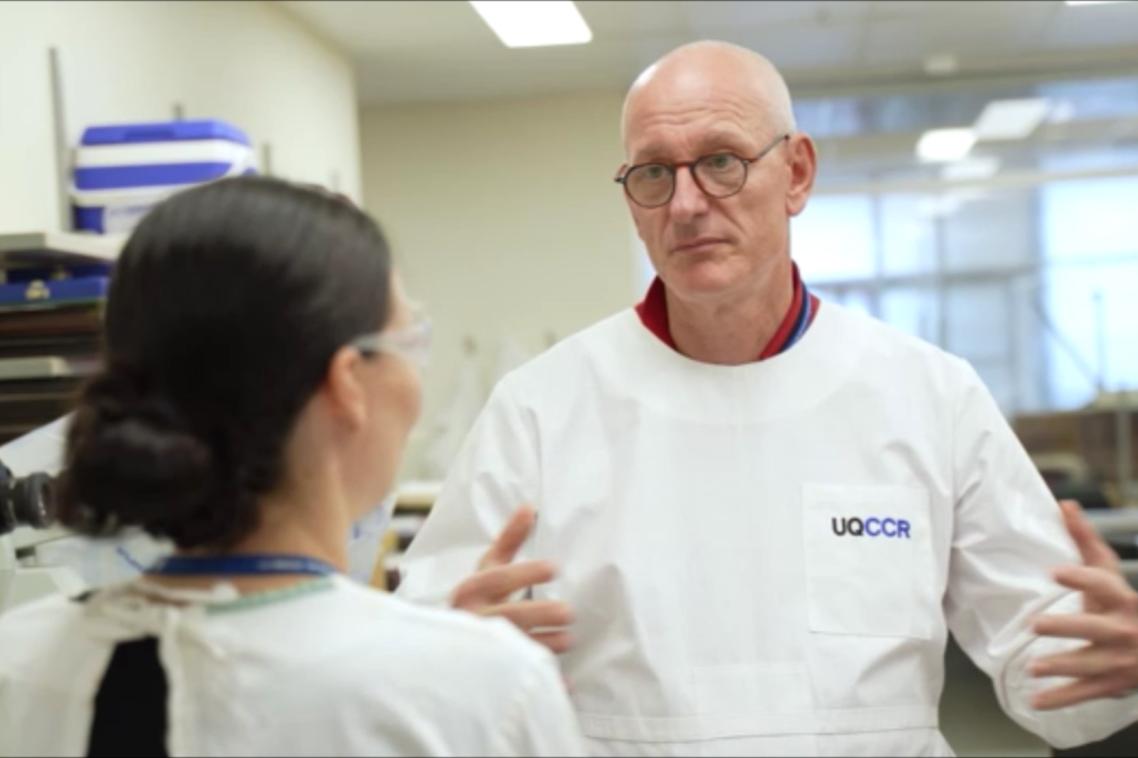Researcher knows how quickly flood rivers can change
Dr Chris Fielding, a geologist at the University of Queensland, has been watching the recent flooding in the Townsville area with more interest than most.
For the past three years he and his co-worker, Dr Jan Alexander, from the University of East Anglia, in England, have made a special study of the Burdekin River, the largest of all rivers flowing into the Coral Sea.
The river, which draws from a catchment of 129,500 square kilometres, starts in the Atherton Tablelands and runs for about 600km before reaching the sea just south of Townsville.
Dr Fielding, of the University's Earth Sciences Department, has been studying the Burdekin to gain a better understanding of sediment movement patterns in tropical rivers.
His research has meant visiting the Burdekin at least once or twice each year to survey, map and take samples from the riverbed. Since 1994 he has witnessed the river in all its moods.
In winter the Burdekin is likely to be just a trickle of slow-moving water, maybe 20 to 30cm deep and perhaps 10 metres wide in a riverbed up to half a kilometre across.
However, at times like this it increases in volume 20,000-fold and the full width of the riverbed becomes a raging torrent anything from 20 to 30 metres deep.
'One of the most remarkable things about this transition of the Burdekin from low water to flood is that it can happen in less than 24 hours. It's quite stunning,' Dr Fielding said.
During flood the river carries with it millions of tonnes of sediment most of which is eventually washed out to sea.
To date there is no way of accurately measuring how much sediment is moved. However, Dr Fielding has shown that in the process much of the riverbed is stripped bare of sediment before fresh layers are deposited.
Dr Fielding hopes practical use will be made of his research findings in areas such as environmental planning and management, and mineral exploration.
One of the biggest floods of the Burdekin was in 1991 and Dr Fielding estimates current levels are still below that.
He said rivers did not behave according to conventional statistics and flooded more often than people liked to admit; flooding in the area of the Burdekin could be expected reasonably frequently.
'With the tropical climate, cyclonic activity and broader weather patterns, this is just something you have to learn to live with,' Dr Fielding said.
However, he also thought the authorities and residents could be more pro-active in preparing for such events and trying to prevent them.
Dr Fielding said physically little could be done to tame the river. A dam on the Burdekin was one attempt but the water flowed right over the top and it made only a slight difference downstream.
However, more tree planting along the banks would help prevent erosion, especially using the right types of trees with huge root systems which helped stabilise the sediment surface
Dr Fielding said local planners needed to take more account of natural events like flooding, for example by controlling residential development in low-lying areas and improving drainage works.
'I also wonder if, in view of the rapid changes in river levels, there is scope for a better warning system for those living in areas likely to be hit by floodwaters.'
For further information, contact Dr Chris Fielding (telephone 3365 2373).
Related articles

A meeting of the minds that could transform treatment

UQ experts recognised for national impact
Media contact
UQ Communications
communications@uq.edu.au
+61 429 056 139
